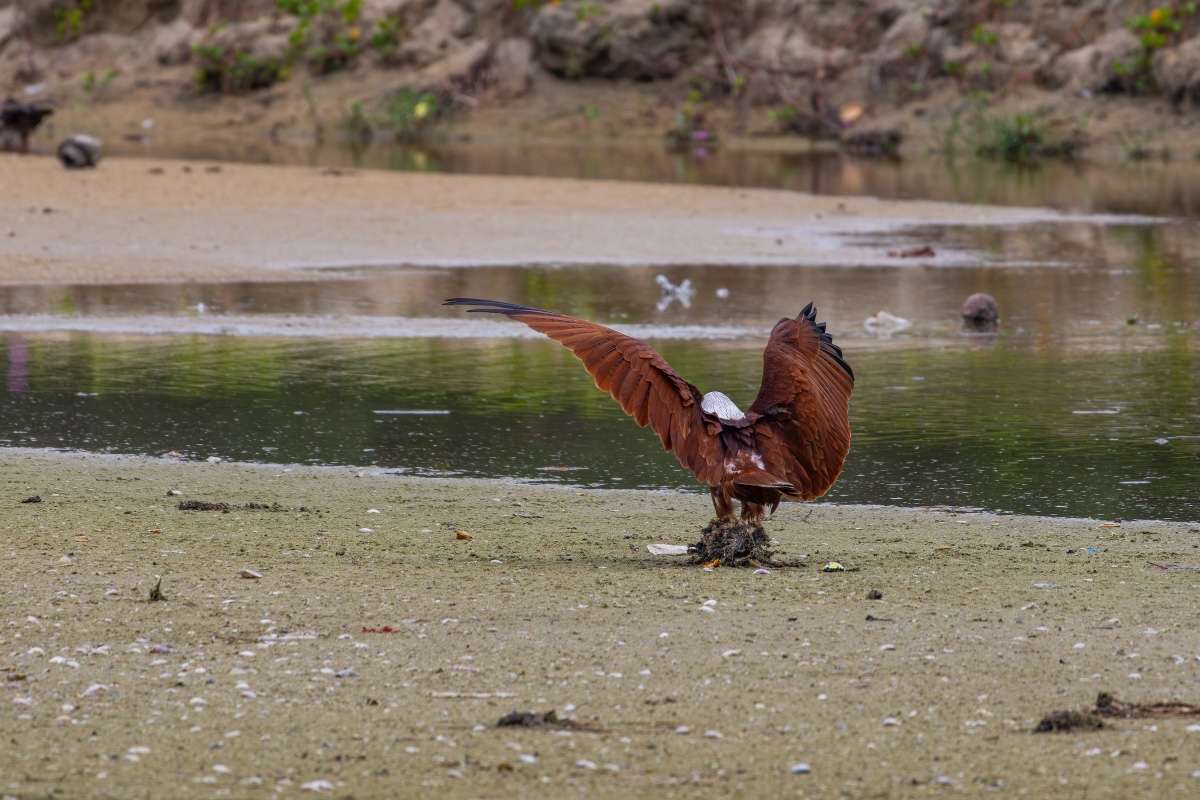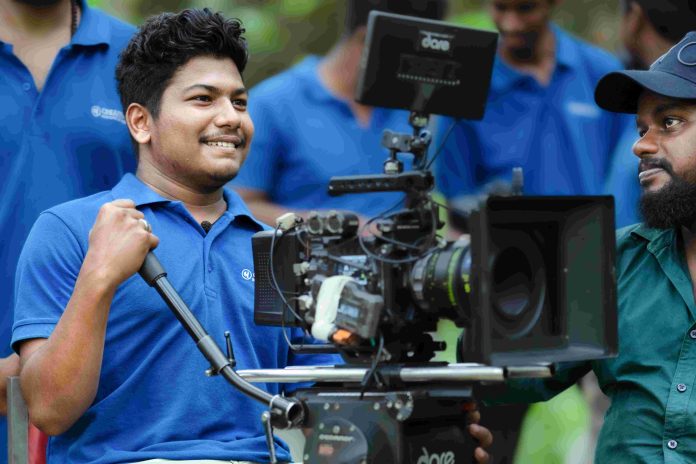The Brahminy kite, found in Australia, Southeast Asia, and the Indian subcontinent, has reddish-brown plumage, a white head, and black wing tips. It feeds on dead fish and preys near coasts and marshes. Nests are built in trees, with the female incubating the eggs. The young are playful and can swim if needed.
The brahminy kite (Haliastur indus), or red-backed sea eagle, inhabits Australia, Southeast Asia, and the Indian subcontinent. Found along coasts and inland marshes, it feeds on dead fish and other prey. Its reddish-brown body contrasts with its white head and breast, making adults easily recognizable.

Swift Landing The kite lands, its mates watching nearby.
The brahminy kite stands out with chestnut plumage, black wingtips, and a white head and breast. Juveniles are browner but distinguishable by their paler look, shorter wings, and rounded tail from black kites in Asia.

With kill The kite landing with his kill.
The squarish-shaped pale patch on the underwing carpal region is distinct from Buteo buzzards. The brahminy kite is around the same size as the black kite and flies like a standard kite, with angled wings. However, unlike the black and red kites, which have forked tails, the brahminy kite’s tail is spherical. In South Asia, the breeding season lasts from December to April. It is April to June in the north and west of Australia, and August to October in the south and east.

Focused Vision The kite observes the sky, curious and alert.
They primarily build nests in various trees, most often in mangroves, using short branches and sticks with a leaf-lined bowl inside. Additionally, they return to the same nesting spot each year, demonstrating strong site fidelity. However, on rare occasions, they build nests on the ground beneath trees. Typically, they lay two round, dull-white or bluish-white eggs per clutch, each measuring 52 x 41 mm.

Splashing Kites The Brahminy Kites enjoy a refreshing bath.
While both parents actively participate in nest construction and feeding, only the female most likely incubates the eggs. Incubation takes approximately 26 to 27 days. Furthermore, young birds may exhibit play behavior by flinging leaves into the air and attempting to catch them. Additionally, although they occasionally land in the water while fishing, they can swim and take off with ease. Moreover, observers have spotted up to 600 at one spot, where they collectively roost on large trees.
Copyrights : All the photos and texts in this post are the copyright of John Thomas and Creative Hut Institute of Photography and Film. Their reproduction, full or part, is forbidden without the explicit approval of the right owners


